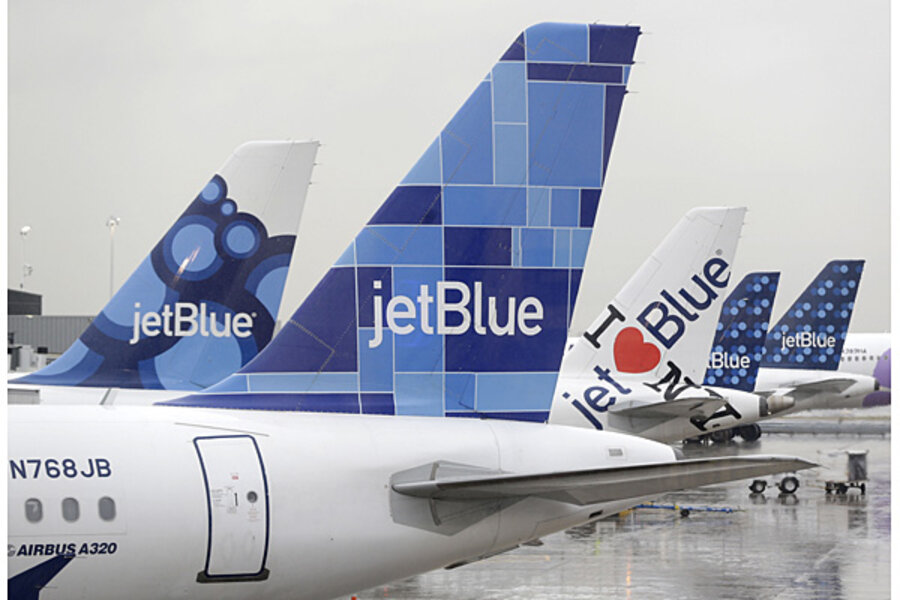Why JetBlue has bigger winter blues than other airlines
Loading...
Mother Nature has been especially unkind this winter, with subzero temperatures and heavy snowfalls hitting large swaths of the United States in January. And perhaps nowhere has the chill been felt so acutely as within the airline industry.
Just weeks after one “polar vortex” caused tens of thousands of flights to be delayed or canceled earlier this month, another Arctic blast brought a round of heavy snowfall to the northeastern United States again this week, disrupting thousands more. Once again, one airline seemed far more affected than the others: JetBlue.
JetBlue had to cancel about 475 flights Tuesday and Wednesday in response to the latest winter storm, according to the company. FlightStats, a site that tracks flight routes nationally and around the globe, estimates that about 34 percent of JetBlue flights were affected, the largest proportion for any major American carrier. Around 3,200 flights were canceled industry-wide Tuesday.
The cancellations come just as JetBlue was beginning to move past its last large-scale weather disruption, when a combination of the weather and a shortage of adequately rested pilots (due to new federal rules that went into effect that week) forced the carrier to completely ground its operations at four airports on Jan. 6 and 7, affecting travel for an estimated 150,000 passengers. It was a PR nightmare for the airline. The bad weather hit at the tail end of the holiday travel season, and it took some passengers several days to get to their destinations. JetBlue stock tumbled 4 percent the day of the shutdown.
So, is JetBlue worse-prepared for dealing with inclement weather than other airlines? Hardly, says airline industry analyst Robert Mann, who thinks that dealing with inevitable bad weather is an industrywide problem that has only become worse as flights overall become more full. “When I started in the industry 30 years ago, most flights were at about 50 percent capacity,” he says. “Now we run around 80 percent, and that makes the rebooking process a lot longer.”
Singling out JetBlue isn’t necessarily fair, he says. For one, most major airlines “use regional carriers to fly about half of their domestic departures. When one of those guys has to cancel, it’s usually a cancellation of one of those regional partner flights, and that doesn’t show up in the statistics of the big national carrier.”
JetBlue doesn’t work with partner carriers, so the full brunt of their cancellations show up in their statistics.
The other issue is simple geography. JetBlue operates primarily out of the Northeast, so it’s more vulnerable to winter weather than carriers based in milder climes. “A hub in Houston will be less affected,” Mr. Mann notes.
This is far from JetBlue’s biggest customer crisis. In 2007, a Valentine’s Day weekend snowstorm forced the cancellation of about 1,000 JetBlue flights in five days, and poor communication to passengers and crew members exacerbated the delays. In response, the airline was one of the first to adopt a customer bill of rights and greatly expanded its communications systems to alert customers of flight delays and cancellations. “They learned from that, and a lot of what they do today is a direct result,” says Mann, who formerly worked as an executive at American Airlines and TWA. “They cancel more than others, but they’re also a lot more transparent about it now,” he says.
JetBlue’s customers seem to appreciate it – among low-cost carriers, the airline has topped J.D. Power and Associates’ Airline Satisfaction survey for nine straight years. And the most recent spate of bad weather shouldn’t be nearly as bad as the last – travel is less busy than it was earlier in the month, leaving passengers with more options to rebook their flights, JetBlue spokeswoman Jenny Dervin told CNNMoney.








